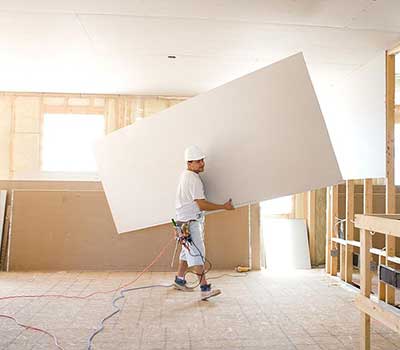Texture Matching Services in Joliet, IL
We all know that drywall can make a room feel closed in and cramped. But did you know there’s a way to take care of this? Texture matching is an easy-to-use technique, which involves the application of pierced tiles or other textured materials over flat surfaces. This creates depth and texture without adding any height. The result will be an appealing, open space with the added benefit of reduced noise from outside sources such as traffic, TVs, stereos, and children playing.
Joliet Drywall is proud to announce its new service of drywall texture matching and drywall repair! We offer a way for you to get the look and feel of your walls and ceilings you want with the ease and convenience of ordering what you need when you need it. With our new style guide, we will be able to find exactly what you’re looking for in terms of color, type (flat or textured), thickness, etc. Contact Joliet Drywall today if this sounds like something that would work well for your seamless texture matching project!

What is Drywall Texture Matching?
Some walls and ceilings require drywall texture matching to emulate the desired professional finish. Texture matching involves applying plaster or joint compound in such a technique as to recreate, for example, the effect of stippled surfaces on the ceiling of bookshelves for visual appeal. Drywall texture matching is often used in commercial and residential construction, such as hotels and restaurants.
Types of Textured Ceiling
When it comes to patching textured walls and ceilings, professionalism and experience matter. For years, Joliet Drywall has focused on drywall texture matching and drywall repair, so we know how to fix a variety of existing texture, including:
Orange Peel: This is a popular texture that looks like the surface of an orange. It’s characterized by small, slightly raised bumps. To achieve this look with paint or drywall compound, builders usually create it using multiple layers and sanding between each layer to ensure smoothness.
Smooth: The other most common ceiling texture matching type is “smooth,” which has no visible bump or pattern on its surface. This can be achieved by applying mud in only one thin coat over the entire surface area of existing wall before painting or texturing with a roller to add coloration.
Knockdown: This textured ceiling is characterized by a smooth, flat surface save for one or two indentations. To achieve this look with mud and sanding, the drywall compound must be applied heavily in just one wall but lightly in others.
Distressed: Distressed ceilings were created as an intentional design element that gives an entire wall character and adds dimension. To create a distressed ceiling using paint or texture materials, builders first apply multiple layers of mud before applying additional coats over it all until they reach the desired level of distress.
Pebble: Pebble-style textures are characterized by small round bumps on their surfaces instead of large peaks like orange peel finishes have. This can be achieved with either paint or texture material depending on preference; however, adding color with a roller is usually necessary.
Tray: Tray ceilings are characterized by tiles or “trays” that sit in the middle of each ceiling area and vary slightly in size, coloration, and shape to create visual interest. To achieve this texture type using mud instead of paint requires multiple layers before sanding between coats for smoothness.
Knife-Scraped: A knife scrape finish features long lines gouged into the drywall at varying depths to create an almost wood-like pattern on its surface. These finishes can be recreated easily when applying mud over existing textured surfaces but they’re difficult to produce without experience due to how maneuverable the tool used must be during application.
Stipple: Finally, stippled ceilings are characterized by a pattern of small dots on the surface that look like stars when viewed from below. These finishes can be created with paint, but they’re usually achieved using texture material in combination with experience and patience to ensure even distribution across all ceiling areas.
Common Mistakes When Matching Ceiling Texture
One of the most common mistakes homeowners make when attempting to re texture their ceiling is using too much mud and sanding it down until smoothness. This often leaves visible lines across the surface that stand out from each other, giving away what’s been done as an attempt at matching instead of actually achieving it.
Another common mistake people make is applying only one thin coat over all areas without taking time or care to remove bumps in some places but not others for variation — this results in orange peel textures rather than stippled ones since there are no small dots created between larger ones. Finally, another frequent misstep happens when someone attempts to create knife-scraped surfaces with paint alone due to how easy it looks; however, this can’t be achieved with paint, only texture material.
Joliet Drywall Can Texture Match Your Ceilings
At Joliet Drywall, we can texture match your ceilings to make them look like the rest of your walls. Our experienced seamless texture matching team can make sure that you won’t be able to tell where one ends and the other begins, which will give your home an even more professional look and seamless results.
Give us a call today for any matching texture questions or concerns! We would love to help you out with this texture matching process.